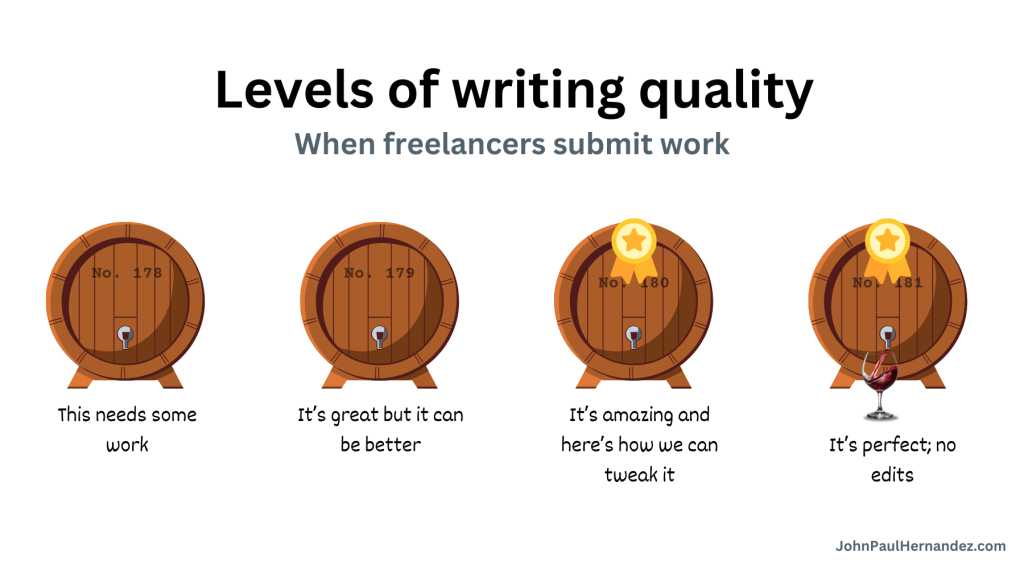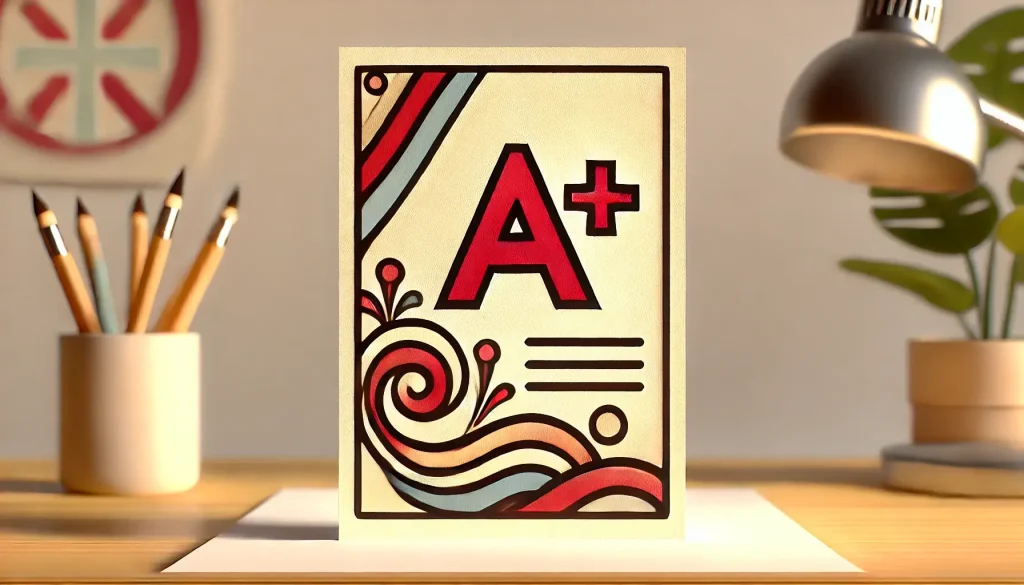When you work with freelancers, different writers fall into specific editing categories. Some submit work that needs minimal editing, saving you and the writer time. Others require significant revisions, leading to hours of back-and-forth adjustments.
But poor quality doesn’t always mean the writing is terrible.
For example, a professional might craft exceptional internal technical content for a software company but struggle with providing content for its blog readers, making it overly complex or disengaging.
In this context, quality refers to hitting the mark on your expectations.
Missing the mark includes failing to follow style guidelines, brand voice, prove subject expertise, or address small yet critical details that impact your target audience’s perception. If a freelancer fails to deliver on these needs, everyone will have to spend much more time in the feedback stage. However, that doesn’t have to be the case.
To streamline your workflow, improve articles pre-submission, and save time, you can leverage the stages of quality to evaluate work.
Stages of quality for submissions
Writing is like winemaking.
A professional writer knows excellent writing requires constant refinement.
Like a quality-control taster, a client reads the piece and offers feedback. For example:
A wine taster might say, “This barrel is too dry or too sweet.”
You might tell a writer, “This sentence feels long-winded.”
The writer makes adjustments and improves future submissions over time.
The key difference in submissions is where the writer starts in the quality stages.
Below are the different levels:

1. “This needs work.”
Most beginner freelancers start here. Whether new to writing or unfamiliar with your industry, they haven’t met expectations yet.
Common reasons include:
- Missing the article’s core message
- Not meeting editorial standards
- Failing to apply feedback
- Writing that’s difficult to read
This stage requires heavy feedback, which drains your time. If the freelancer doesn’t improve quickly, you’ve hired yourself for a part-time job, providing constant corrections.
Every freelancer starts somewhere, so offering grace is fine—if you can afford the extra effort. But improvement should be rapid.
2. “It’s great, but it could be better.”
Most freelancers fall into this category. They deliver intense work, but some areas don’t align with your style guidelines or audience relevance.
Many companies and agencies work with these writers for high-volume output. They’re solid, but editing takes time and adds friction to the pipeline.
If you have the bandwidth for editing and quick feedback loops, these freelancers can be valuable—especially in tightly managed workflows.
3. “It’s fantastic, and here’s how we can tweak it.”
This is the sweet spot. Imagine the following:
- The freelancer submits the work.
- It nails your expectations—or even exceeds them.
- You spot a few minor tweaks—maybe a phrase that clashes with your brand voice. You provide feedback in three minutes.
- The writer corrects it in five.
When you’re in sync with a writer at this level, you save time, publish better content, and boost output. A high-performance freelancer here is worth five average ones, dramatically increasing efficiency and quality.
4. “Perfect; no edits.”
Sometimes, you hit the jackpot.
While not every piece will be flawless, occasionally receiving a submission that needs zero edits is a great sign. It means you’ve found a freelancer who truly understands your brand.
When this happens, tell the writer why. Reinforcing what they did right helps ensure more “perfect” submissions in the future.
Freelancers should be partners
Editing and feedback should serve one goal: helping freelancers understand your brand so well that their work requires minimal intervention.
When a freelancer aligns with your content strategy, the impact is notable—faster execution, a more consistent brand voice, and, ultimately, better ROI.
How to identify stage 3 and 4 freelancers for minimizing editing work
How do you find writers who consistently submit near-perfect work? First, understand that onboarding takes time. Even the best freelancers need a grace period to learn your brand. But certain traits signal they’ll reach that top tier:
- They pass your writing test. If you send a quick assessment—like writing an introduction—they follow your instructions flawlessly.
- They show range. Reviewing their guest posts, client work, or other projects, you see versatility in brand voice, style, and tone.
- They’ve worked across agencies, brands, and personal projects. A well-rounded writer has navigated many different client expectations and brand consistency and even led their independent work. This experience sharpens adaptability.
- They adjust quickly. After a writing test, give feedback. Then, send another assignment without repeating your suggestions. If they implement past feedback without being reminded, that’s a great sign.
Finding the right freelancer means securing high-quality content with minimal effort. Hire a high-performance writer if you want content that consistently hits the mark.
Contact me to build quality BOFU pieces that engage your audience and drive conversions.


